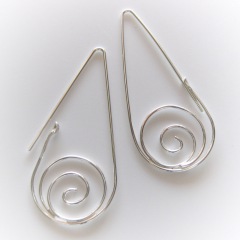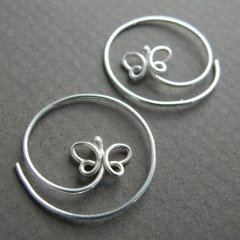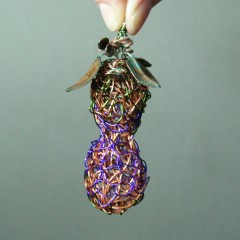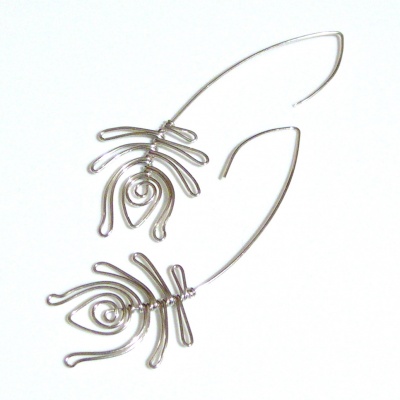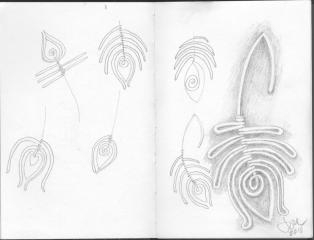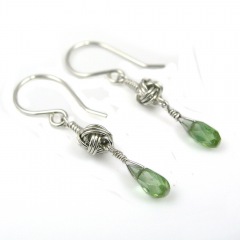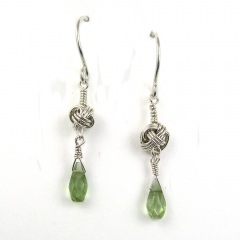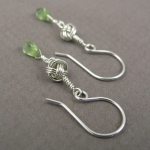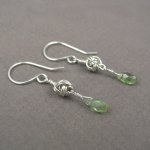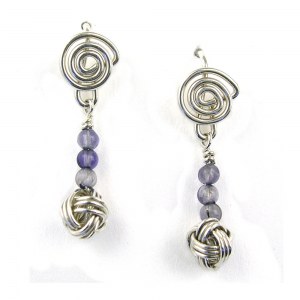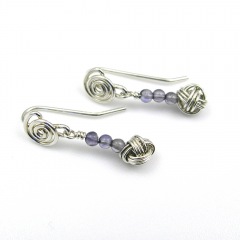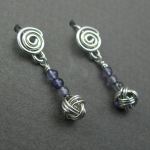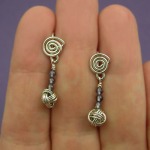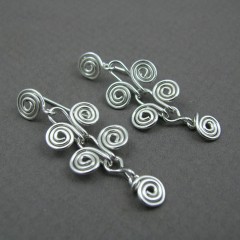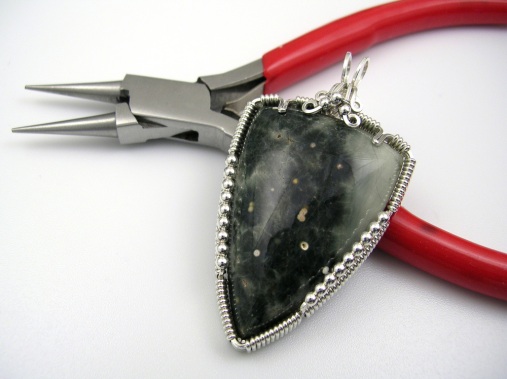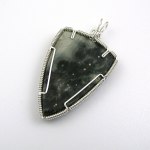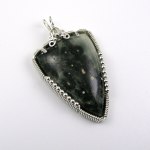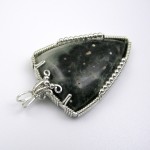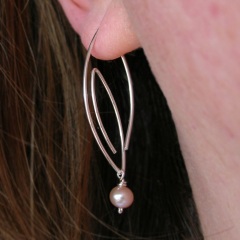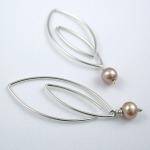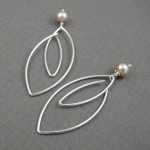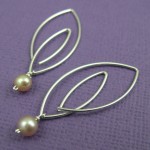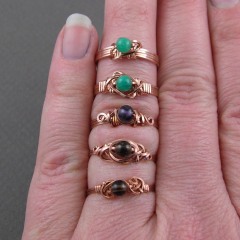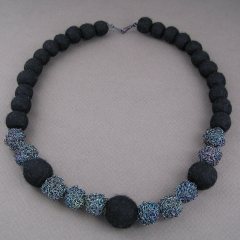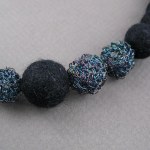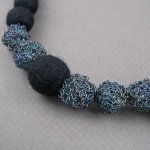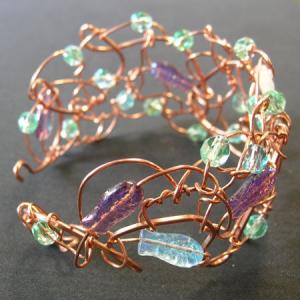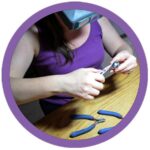The Peanut Experiment (2011)
Copper, polymer-coated copper, sterling silver
Formed, fold-formed, cold-joined, fused, patinated
W 2.5 cm x H 8.5 cm
.
This week’s entry is actually the end of a several week long process where I experimented with a different method for forming.
This is an idea I’ve been wanting to try ever since seeing a website by a British artist who made life size human figures out of wire. His name is regretfully forgotten, and the link to his website lost. What I remember the most – besides the wonderful realism of his figures – was that he built them over a solid core, which was later burned out.
Cores are often used with metal clay for making hollow forms such as boxes or beads. After some research, I bought some cork clay, and then promptly got too busy to go any further.
Cork clay is usually burned out in a kiln. Since I’m not interested in making a substantial investment for something I may not stick with, I started researching low-tech alternatives. I remembered a thread on Ganoksin about using a flower pot kiln for burning out wax. The Ganoksin archives, while vast and wide-ranging, are frustrating to search, and didn’t provide anything really helpful. Evenually, I found some basic information elsewhere online for building a flower pot kiln and went about collecting the materials to build one.
I wasn’t sure if the kiln would get hot enough to burn out the cork clay, so I made my first core out of bread dough. Since it was just an experiment, I opted to do a freeform winding of copper wire around the core.
Finding an unglazed clay pot of an appropriate size in January in Canada is a challenge. However, I did find one – and only one – at Home Depot.
Once back at home, I lined the pot with tin foil, set up the hotplate on my back deck, put a modified coffee can on the element, added the piece to be fired, covered it, and turned it on.
It smoked a lot, and stunk to high heaven, but considering it was in -12°C and blowing gusts, it worked very well! The core-free wire looks a bit like a peanut.
Because with the YOJP, a finished piece is supposed to be submitted each week, I decided to also try my hand at making some leaves with fold forming, which were then patinated using salt & ammonia. They were attached to the peanut and presto! a finished piece.
It’s not pretty, but it wasn’t intended to be. My next step will be to try again with the cork clay.
Process photos:


